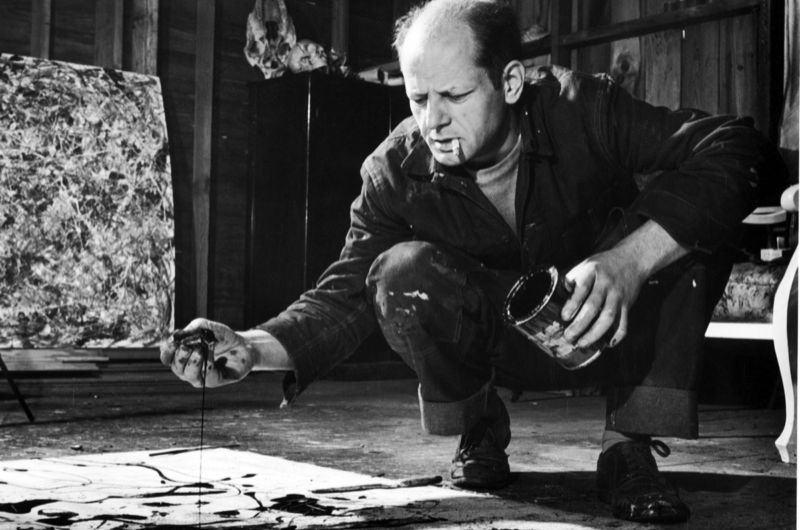Splatter master Jackson Pollock avoided “coiling” when creating his paintings

Enlarge / Jackson Pollock working in his Long Island studio adjacent to his home in 1949. (credit: Martha Holmes/The LIFE Picture Collection via Getty Image)
Famed abstract expressionist Jackson Pollock notoriously relied on non-traditional painting techniques to create his masterpieces. Physicists have pondered the presence of curls and coils in his work, and whether the artist deliberately exploited a well-known fluid dynamics effect to achieve them. Now a recent paper in PLOS One is claiming the opposite: Pollock deliberately avoided so-called "coiling instabilities" as he worked.
For the last few years, Roberto Zenit, a physicist with the National Autonomous University of Mexico and Brown University, has been studying the physics of fluids at work in novel painting techniques like those used by Pollock and Mexican muralist David A. Siqueiros. Pollock, for instance, early on employed a "flying filament" or "flying catenary" technique before he perfected his dripping methods. The paint forms various viscous filaments, which are thrown against a vertical canvas. Zenit and several colleagues were able to recreate the fluid action by mounting a paint-filled brush on a rapidly rotating mechanical arm.
Pollock's dripping technique involved laying a canvas flat on the floor and then pouring paint on top of it. Sometimes he poured it directly from a can, sometimes he used a stick, knife, or brush, and sometimes he used a syringe. The artist usually "rhythmically" moved around the canvas as he worked. His style has long fascinated physicists, such as the controversy surrounding the question of whether or not Pollock's paintings show evidence of fractal patterns.
Read 9 remaining paragraphs | Comments
from Gaming & Culture – Ars Technica https://ift.tt/328OEhi